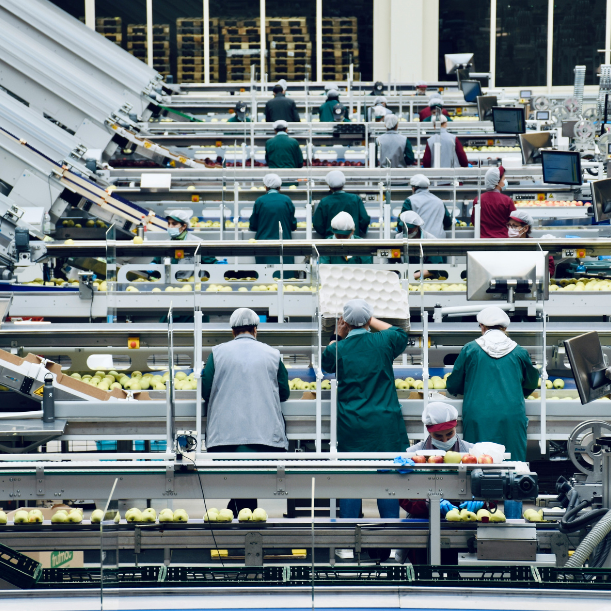With workplace injuries costing $250 billion annually, more than the cost of cancer, understanding safety officer roles and responsibilities has never been more crucial for organizational success.
Recent data reveals that 1 in 10 workers feel unsafe at work, with only 22% feeling “very safe” on worksites. This gap between perception and safety performance highlights why the role of safety officer extends far beyond compliance. It’s about creating environments where employees can work confidently and productively.
Whether you’re a recruiter seeking qualified safety professionals or a candidate exploring safety officer job opportunities, this comprehensive guide reveals exactly what is safety officer responsibilities entail and why these roles are essential for modern workplace success.
Who is a Safety Officer?
A safety officer is a trained professional responsible for implementing, monitoring, and maintaining safety protocols within an organization.
The safety officer meaning encompasses someone who serves as the primary guardian of workplace safety, ensuring compliance with regulatory standards while protecting employees from potential hazards.
Safety officer means taking on the crucial responsibility of creating a culture of safety within any organization, from construction sites to manufacturing facilities, offices, and industrial complexes.
Safety Officer Roles and Responsibilities
Safety officers have five primary responsibilities: conducting risk assessments and identify workplace hazards, developing and implementing safety policies, delivering comprehensive training programs, investigating incidents and implementing corrective actions, and ensuring regulatory compliance through systematic monitoring and documentation.
Understanding safety officer responsibilities is essential for both employers and job seekers. Check them below-
Risk Assessment and Hazard Identification
Safety officers serve as the first line of defense against workplace dangers by systematically identifying and evaluating potential risks. This fundamental responsibility of safety officer involves using scientific methodologies and industry-standard assessment tools to predict and prevent accidents before they occur.
- Conducting comprehensive workplace safety audits: Performing detailed examinations of all work areas, equipment, and processes to identify potential safety vulnerabilities. These audits typically follow structured checklists and involve both visual inspections and data analysis to ensure nothing is overlooked.
- Identifying potential hazards and safety risks: Recognizing physical, chemical, biological, and ergonomic hazards that could harm employees. This requires deep knowledge of industry-specific risks and the ability to spot both obvious and subtle danger signs.
- Evaluating existing safety measures and protocols: Assessing the effectiveness of current safety controls and determining whether they adequately protect workers. This involves testing emergency systems, reviewing safety procedures, and analyzing historical incident data.
- Developing risk mitigation strategies: Creating targeted action plans to eliminate or reduce identified risks to acceptable levels. These strategies often include engineering controls, administrative changes, and personal protective equipment recommendations prioritized by risk severity.
Safety Policy Development and Implementation
The duty of safety officer extends to creating the foundational framework that guides all safety activities within an organization. This involves translating complex regulations into practical, actionable policies that employees can understand and follow.
- Creating comprehensive safety policies and procedures: Developing clear, detailed written instructions that address specific workplace hazards and establish consistent safety practices. These policies must be tailored to the organization’s unique risks while remaining practical for daily implementation.
- Ensuring compliance with local, state, and federal safety regulations: Staying current with evolving safety legislation and ensuring organizational practices meet or exceed all legal requirements. This includes understanding jurisdiction-specific requirements and industry standards that may vary by location.
- Implementing safety management systems: Establishing structured approaches to safety management that integrate safety considerations into all business processes. These systems typically include documentation protocols, communication channels, and continuous improvement mechanisms.
- Updating safety protocols based on industry best practices: Regularly reviewing and revising safety procedures to incorporate new technologies, lessons learned from incidents, and emerging industry standards. This ensures the organization maintains cutting-edge safety practices.
Training and Education
Education forms the cornerstone of effective safety programs, making this a critical safety officer responsibility. Safety officers must be skilled communicators who can translate technical safety information into engaging, memorable training experiences.
- Conducting safety training sessions for employees: Delivering interactive, hands-on training programs that address both general safety principles and job-specific hazards. Effective training sessions use multiple learning modalities and include practical demonstrations to ensure knowledge retention.
- Developing safety awareness programs: Creating ongoing campaigns that keep safety top-of-mind for all employees through newsletters, safety meetings, competitions, and recognition programs. These programs help build and maintain a strong safety culture throughout the organization.
- Ensuring proper use of personal protective equipment (PPE): Training employees on correct PPE selection, fitting, use, maintenance, and replacement. This includes conducting fit-testing for respirators and ensuring employees understand when and why specific protective equipment is required.
- Educating staff on emergency procedures: Preparing employees to respond effectively to various emergency scenarios through regular drills, tabletop exercises, and specialized training. This includes evacuation procedures, first aid response, and crisis communication protocols.
Incident Management and Investigation
When safety incidents occur, the roles and responsibilities of safety officer include thorough investigation and systematic prevention of future occurrences. This reactive component of safety management is crucial for continuous improvement and legal compliance.
- Investigating workplace accidents and near-miss incidents: Conducting methodical investigations using root cause analysis techniques to understand not just what happened, but why it happened. This involves interviewing witnesses, examining physical evidence, and analyzing contributing factors to prevent recurrence.
- Documenting safety incidents and maintaining records: Creating detailed incident reports that capture all relevant information for legal, insurance, and improvement purposes. Proper documentation helps identify trends and provides valuable data for safety program enhancement.
- Developing corrective action plans: Creating specific, measurable action items to address the root causes identified during investigations. These plans include timelines, responsible parties, and follow-up procedures to ensure implementation and effectiveness.
- Reporting incidents to relevant authorities: Ensuring timely notification to OSHA, insurance companies, and other regulatory bodies as required by law. This includes understanding reporting thresholds and maintaining communication with external stakeholders throughout the investigation process.
Compliance and Regulatory Management
Regulatory compliance represents a fundamental safety officer duty that protects both employees and the organization from legal and financial consequences. This involves staying current with an ever-changing landscape of safety regulations and standards.
- Ensuring compliance with OSHA regulations and industry standards: Maintaining thorough knowledge of applicable safety regulations and implementing systems to ensure ongoing compliance. This requires regular monitoring of regulatory changes and proactive adjustment of organizational practices.
- Conducting regular safety inspections: Performing systematic examinations of workplace conditions, equipment, and practices to identify compliance gaps and safety concerns. These inspections follow standardized protocols and result in actionable recommendations for improvement.
- Maintaining safety documentation and records: Managing comprehensive safety records including training documentation, incident reports, inspection findings, and corrective action tracking. Proper record-keeping is essential for demonstrating compliance during regulatory audits.
- Liaising with regulatory bodies and inspectors: Serving as the primary point of contact for interactions with OSHA inspectors, insurance auditors, and other external safety professionals. This requires strong communication skills and thorough knowledge of organizational safety programs and performance.
Also Read: Desktop Support Engineer Roles and Responsibilities to explore key duties, required skills, and career growth in IT support.
Daily, Weekly, Monthly Duties & Responsibilities of Safety Officer
Safety officers perform three core functions: prevention through risk assessment and hazard identification, protection through policy development and compliance monitoring, and response through incident investigation and corrective action implementation. These professionals serve as the operational backbone of workplace safety, translating regulatory requirements into daily practices that protect employees and reduce organizational liability.
Daily Duties of Safety Officer
- Morning Safety Briefings: Conducting daily safety meetings with teams
- Site Inspections: Regular walkthrough inspections of work areas
- PPE Compliance Monitoring: Ensuring proper use of safety equipment
- Hazard Spotting: Identifying and addressing immediate safety concerns
- Documentation: Maintaining daily safety logs and reports
Weekly Responsibilities of Safety Officer
- Comprehensive Safety Audits: Detailed inspection of all work areas
- Safety Meeting Facilitation: Leading weekly safety committee meetings
- Training Program Delivery: Conducting specialized safety training sessions
- Equipment Inspection: Checking safety equipment and systems
- Report Generation: Creating weekly safety performance reports
Monthly Safety Officer Job Responsibilities
- Safety Performance Analysis: Reviewing safety metrics and trends
- Policy Review and Updates: Updating safety procedures and protocols
- Regulatory Compliance Check: Ensuring ongoing compliance with regulations
- Emergency Drill Coordination: Organizing and conducting safety drills
- Stakeholder Reporting: Presenting safety reports to management
Safety Officer Job Description and Profile
A well-crafted job description (JD) outlines the key responsibilities, duties, qualifications, and expectations associated with a role. It helps both employers and candidates clearly understand what the position entails.
For a Safety Officer, the JD should emphasize compliance with safety regulations, hazard prevention, training, and fostering a culture of workplace safety. It should also define the level of experience, certifications required, and any industry-specific knowledge.
Safety Officer JD
Job Title: Safety Officer
Department: Health, Safety, and Environment (HSE)
Reports To: HSE Manager / Plant Manager / Operations Head
Location: [Insert Location]
Job Type: Full-time / On-site / Shift-based (as applicable)
Safety Officer Job Profile Summary
The Safety Officer is responsible for developing, implementing, and enforcing safety policies to ensure a safe and healthy working environment. This role involves conducting regular inspections, risk assessments, training sessions, and ensuring compliance with local, state, and national safety regulations. The Safety Officer plays a critical role in preventing accidents, minimizing hazards, and promoting safety culture across all departments.
Key Responsibilities:
- Monitor and enforce adherence to occupational health and safety (OHS) policies and procedures.
- Conduct routine site inspections and audits to identify unsafe conditions or practices.
- Perform risk assessments and recommend preventive measures.
- Investigate incidents and accidents, prepare reports, and recommend corrective actions.
- Organize and conduct safety drills, workshops, and awareness programs.
- Maintain records of safety inspections, training sessions, and incident reports.
- Liaise with regulatory bodies and ensure compliance with all legal and statutory requirements.
- Assist in the development of site-specific safety plans and emergency response procedures.
- Promote a proactive approach to safety through employee engagement and communication.
- Ensure proper use of personal protective equipment (PPE) and monitor inventory.
- Support other departments in conducting Job Safety Analysis (JSA) or Hazard Identification and Risk Assessment (HIRA).
- Participate in safety committee meetings and continuous improvement initiatives.
Required Qualifications and Skills:
- Bachelor’s degree in Occupational Health and Safety, Environmental Science, Engineering, or a related field.
- Certification in safety management (e.g., NEBOSH, IOSH, OSHA) is strongly preferred.
- Minimum 2–5 years of experience in a similar role, preferably in [industry – e.g., construction, manufacturing, oil & gas].
- In-depth knowledge of applicable safety regulations and standards.
- Excellent communication, investigation, and reporting skills.
- Ability to train and influence employees at all levels.
- Detail-oriented with strong organizational and analytical abilities.
- Proficiency in MS Office and safety management software.
Key Competencies:
- Risk assessment and mitigation
- Incident investigation and root cause analysis
- Emergency preparedness and response
- Regulatory compliance knowledge
- Strong interpersonal and leadership skills
- Conflict resolution and decision-making
Working Conditions:
- On-site inspections, sometimes in hazardous or physically demanding environments
- May require use of protective gear
- Shift-based or extended hours depending on project needs
Salary Range:
[Insert Range] per annum, depending on experience and qualifications
Explore the Job Description category to find out more about to explore various job description templates and roles and responsibilities of popular careers in 2025.
Industry-Specific Safety Officer Work
Safety officers are essential across virtually every industry, from high-risk sectors like construction and manufacturing to healthcare, oil and gas, and office environments.
Each industry presents unique hazards and regulatory requirements that shape the work of safety officer professionals.
While core safety principles remain consistent, the specific roles and responsibilities of safety officer positions adapt to address industry-specific risks, compliance standards, and operational challenges.
Construction Safety Officer
Construction sites present some of the most complex safety challenges, with multiple contractors, heavy equipment, and constantly changing work environments. Construction safety officers must balance productivity demands with stringent safety requirements while managing risks from falls, electrical hazards, and equipment operations.
- Managing construction site safety protocols
- Ensuring compliance with construction safety regulations
- Conducting toolbox talks and safety briefings
- Monitoring heavy equipment operations
Manufacturing Safety Officer
Manufacturing environments require safety officers who understand machine safety, chemical hazards, and production processes. These professionals focus on preventing injuries from industrial equipment while maintaining production efficiency and ensuring worker health in potentially hazardous environments.
- Implementing machine safety protocols
- Managing chemical safety and hazardous materials
- Conducting lockout/tagout procedures
- Overseeing industrial hygiene programs
Healthcare Safety Officer
Healthcare safety officers protect both patients and healthcare workers from unique risks including infectious diseases, radiation exposure, and workplace violence. They must understand medical equipment safety, infection control protocols, and emergency response procedures specific to healthcare settings.
- Managing infection control protocols
- Ensuring patient and staff safety
- Implementing emergency response procedures
- Overseeing hazardous waste management
Oil and Gas Safety Officer
The oil and gas industry presents extreme safety challenges requiring specialized knowledge of process safety management, hazardous atmospheres, and high-risk operations. Safety officers in this sector must understand complex safety systems and manage risks in potentially explosive environments.
- Managing high-risk operations safety
- Implementing process safety management
- Conducting safety audits in hazardous environments
- Ensuring compliance with industry-specific regulations
Also Read: Discover the perfect mix of combination skills– technical, soft, and digital skills top employers are hiring for today.
Safety Officer Career Progression and Development
The safety officer role offers clear advancement pathways from entry-level positions to executive leadership roles. Career progression typically follows experience levels, with opportunities to advance through technical expertise, management responsibilities, and strategic leadership.
Professional certifications, industry specialization, and proven safety performance metrics drive advancement in this growing field.
Entry-Level Safety Officer Positions
- Safety Coordinator: Supporting senior safety officers in day-to-day activities
- Safety Technician: Conducting basic safety inspections and data collection
- Safety Trainee: Learning safety procedures under supervision
Mid-Level Safety Officer Roles
- Senior Safety Officer: Leading safety programs and managing safety teams
- Safety Supervisor: Overseeing multiple safety officers and safety operations
- HSE Officer: Managing health, safety, and environmental programs
Senior-Level Safety Positions
- Safety Manager: Strategic safety leadership and program management
- Director of Safety: Executive-level safety leadership and organizational strategy
- Chief Safety Officer: C-suite safety leadership and corporate safety governance
Safety Officer Salary Expectations and Market Trends
Understanding compensation expectations is crucial for both recruiters and candidates:
Factors Affecting Safety Officer Compensation
- Industry Type: High-risk industries typically offer higher compensation
- Geographic Location: Metropolitan areas and regions with high industrial activity
- Experience Level: Years of safety experience and track record
- Certifications: Professional safety certifications and specialized training
- Company Size: Larger organizations often provide higher compensation packages
Professional Development Opportunities
- Continuing Education: Pursuing advanced safety certifications and degrees
- Industry Conferences: Attending safety conferences and professional development events
- Professional Associations: Joining organizations like ASSE, NSC, and industry-specific safety groups
- Specialized Training: Acquiring expertise in emerging safety technologies and methodologies
Also Read: Explore the key HR Operations Roles and Responsibilities, daily functions, tasks, and skills every HR operations professional needs in 2025.
Technology and Innovation in Safety Officer Work
Modern safety officer job responsibilities increasingly involve digital transformation and emerging technologies.
Safety officers now leverage AI-powered analytics, IoT sensors, wearable devices, and mobile platforms to predict incidents, monitor real-time conditions, and deliver more effective safety programs than traditional methods allow.
Digital Safety Management Systems
- Implementing safety management software and digital platforms
- Using mobile applications for safety inspections and reporting
- Leveraging data analytics for safety performance improvement
- Integrating IoT devices for real-time safety monitoring
Emerging Safety Technologies
- Wearable Safety Devices: Monitoring worker health and environmental conditions
- Drone Technology: Conducting aerial safety inspections in hazardous areas
- Virtual Reality Training: Delivering immersive safety training experiences
- Artificial Intelligence: Predictive safety analytics and risk assessment
Building an Effective Safety Officer Resume
Safety officer job applications require strategic resume construction that highlights quantifiable safety achievements, relevant certifications, and industry-specific experience.
Successful resumes demonstrate measurable safety improvements, regulatory compliance experience, and leadership capabilities while showcasing continuous professional development and technical proficiency.
Essential Resume Sections
- Professional Summary: Highlighting key safety experience and achievements
- Core Competencies: Listing relevant safety skills and certifications
- Professional Experience: Detailing safety roles and accomplishments
- Education and Certifications: Showcasing relevant qualifications and training
- Technical Skills: Highlighting safety software and technology proficiency
Key Resume Tips for Safety Officers
- Quantify safety achievements with specific metrics and data points
- Include relevant safety certifications and professional development
- Highlight industry-specific experience and expertise
- Demonstrate leadership experience and team management capabilities
- Showcase continuous learning and professional development commitment
Also Read: Medical Representative Roles and Responsibilities to learn about daily tasks, key skills, and career path in pharmaceutical sales.
Interview Preparation for Safety Officer Positions
Safety officer job interviews focus on technical knowledge, problem-solving abilities, and real-world experience handling safety challenges.
Candidates must demonstrate regulatory expertise, incident investigation skills, and leadership capabilities while showing their ability to influence safety behavior and implement organizational change effectively.
Common Safety Officer Interview Questions
- “Describe your approach to conducting a comprehensive safety audit”
- “How do you handle resistance to safety protocols from employees?”
- “What steps would you take to investigate a workplace accident?”
- “How do you stay current with changing safety regulations?”
- “Describe a time when you successfully implemented a new safety program”
Interview Preparation Strategies
- Research the Company: Understanding industry-specific safety challenges and requirements
- Prepare Examples: Developing specific examples of safety achievements and experiences
- Know the Regulations: Demonstrating knowledge of relevant safety standards and regulations
- Practice Scenarios: Preparing responses to hypothetical safety situations
- Ask Questions: Preparing thoughtful questions about the organization’s safety culture and challenges
Future of Safety Officer Roles
The safety officer role continues evolving with workplace digitization, remote work trends, and emphasis on mental health. Future safety officers must integrate technology, manage distributed workforces, address psychological safety, and lead cultural transformation while maintaining traditional safety fundamentals and regulatory compliance.
Emerging Trends in Safety Officer Responsibilities
- Mental Health and Wellness: Incorporating psychological safety and employee wellbeing
- Remote Work Safety: Managing safety protocols for distributed and hybrid workforces
- Sustainability Integration: Combining safety with environmental sustainability initiatives
- Data-Driven Decision Making: Using advanced analytics for safety program optimization
- Cultural Transformation: Leading organizational change toward safety-first cultures
Skills for Future Safety Officers
- Digital Literacy: Proficiency with safety technology and data analysis tools
- Change Management: Ability to lead organizational safety transformation
- Cross-Cultural Communication: Managing safety in diverse, global organizations
- Strategic Thinking: Aligning safety initiatives with business objectives
- Innovation Leadership: Implementing cutting-edge safety solutions and technologies
Wrapping Up
The roles and responsibilities of safety officer positions are both diverse and critical to organizational success. Whether you’re a recruiter seeking qualified safety professionals or a candidate exploring safety career opportunities, understanding the comprehensive duties and responsibilities of safety officer roles is essential.
Safety officers serve as the cornerstone of workplace safety, combining technical expertise, leadership skills, and regulatory knowledge to protect employees and ensure organizational compliance. The safety officer job responsibilities continue to evolve with technological advancement and changing workplace dynamics, making this an exciting and rewarding career path for safety professionals.
For recruiters, finding candidates who understand the full scope of safety officer duty requirements will ensure effective safety program implementation. For job seekers, developing expertise in the comprehensive responsibility of safety officer functions will create valuable career opportunities in this essential profession.
The future of safety officer work promises continued growth and evolution, making it an excellent time to pursue or hire for these critical organizational roles.
By understanding the complete picture of safety officer roles and responsibilities, both recruiters and candidates can make informed decisions that contribute to safer, more productive workplaces.
Ready to Hire Safety Officers or Advance Your Career?
For Employers: Taggd’s AI-powered recruitment solutions streamline your hiring process, matching you with skilled accountants who align with your organization’s goals and culture. Find the perfect fit faster with our data-driven approach.
For Job Seekers: Join our Career Circles and get matched to roles that elevate your skills and ambitions.
Explore Taggd for more details.









